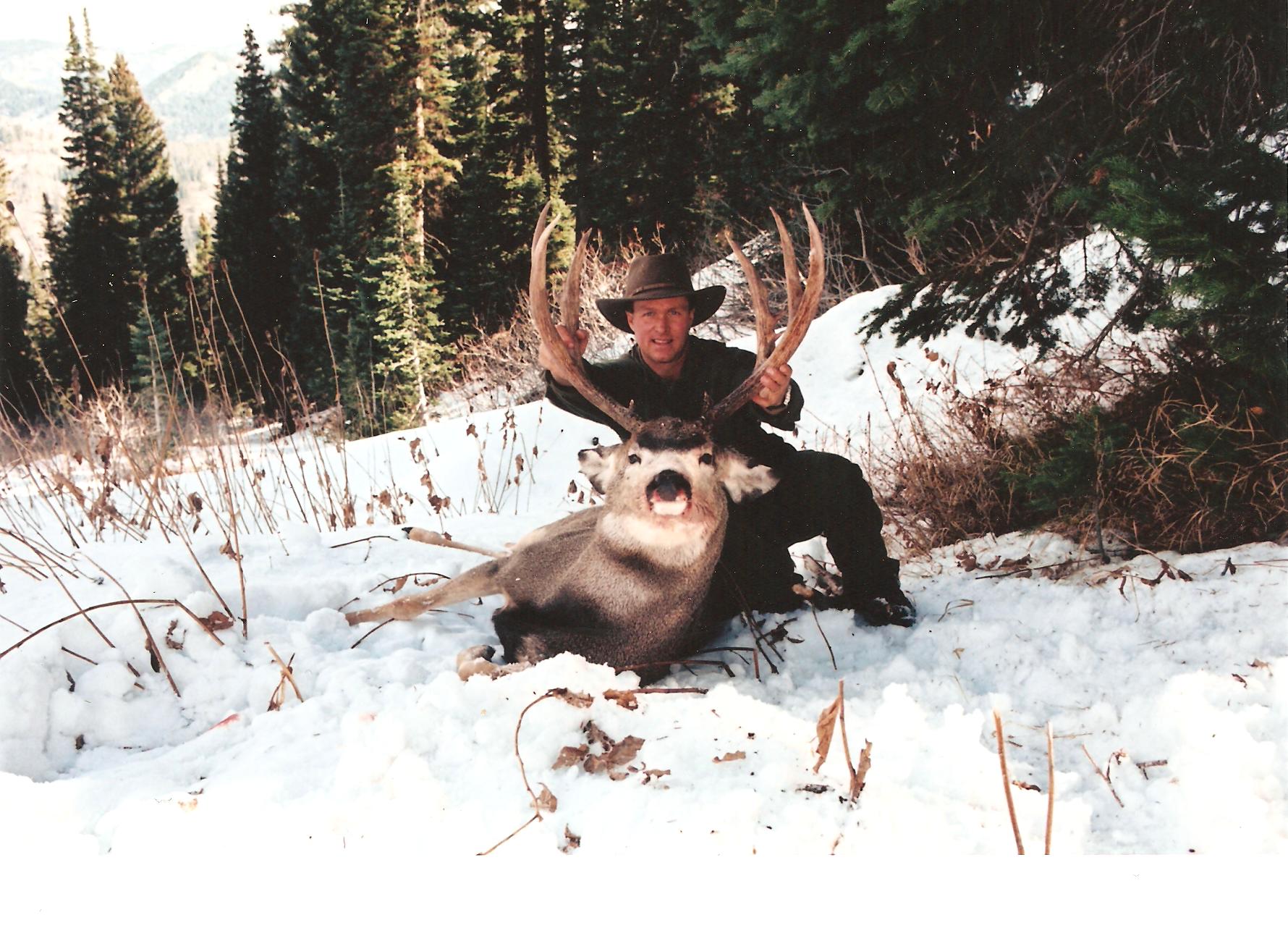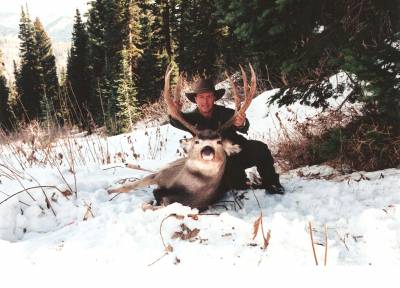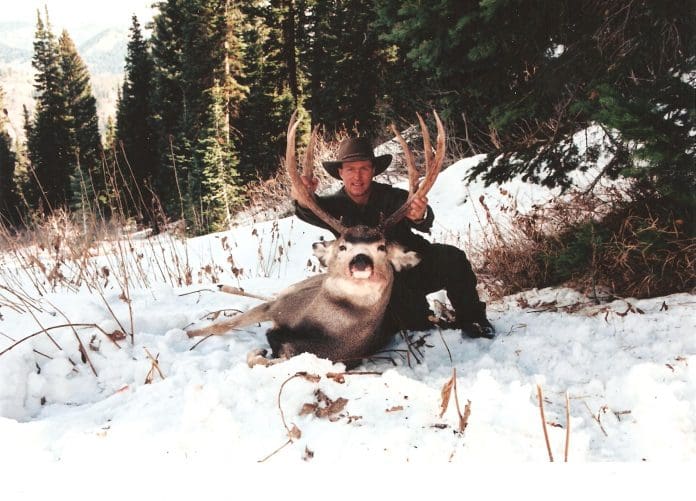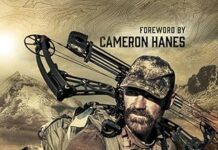
Here are some situations where we spook bucks:
- You’ve glassed quietly for two hours with no luck. You stand up quickly and saunter over to our pack leaned against a tree and start rifling through it.
Any big buck that drifted into range while you glassed will easily pick out that ruckus and simply fade back into the cover, often without you ever knowing he was there. Rather, stand up slowly and don’t take any steps. Survey your surroundings, both with the naked eye (wide angle view) and your binoculars. Then slowly walk to your pack and try not to make any unnecessary noise as you look for a snack. You’ve just invested two hours into the perfect ambush situation, don’t screw it up now.
- You and your buddy are pulling the steepest hill of the hunt. It’s so steep, you’ve forgotten all about being quiet and just want to survive so you can get to the top to glass. You sound like a rutting rhino as you step over brush, kick rocks, and poke fun at your chubby buddy falling behind.
Big bucks are rarely where we think they are and is why we need to hunt quietly anytime we are in deer country. Next time, especially if no one else is spooking the deer, give yourself more time to reach your destination so you’re not forced to walk fast and noisily. That’s what the big bucks do. I’ve killed several good bucks in surprise places I was only walking through to get where I thought I should be.
You can’t just show up in deer country and live the pace of life like we do in civilization. Falsely, many hunters walk into deer country thinking that if they spook a big buck, he’ll expose himself and the hunter can shoot him. That era ended about 1965. Big mule deer bucks, when spooked, will put every bush, tree, rock, and terrain feature between himself and a hunter in a matter of seconds as he makes his escape. If you are hunting for a big mule deer by just walking through deer country, give up while you still have knee cartlilage left. Few big bucks fall for that trick.
I don’t want to sound like I’m some phantom drifting among the forest creatures undetected. I’m a bumbling human being who also has a hard time leaving the pace of life behind. However, sometimes, some days, I hit it just right- often for reasons I can’t explain. My brain and body began to work together in a calmness that allows me to move very slow and very quiet, just like big bucks move. While I don’t kill a big deer every time I move slow, I’ve killed virtually all of my big deer when I’m moving slow. You will, too.

I killed this five-year old (lab-aged) Idaho buck in an area I was only moving through to get somewhere “better.” I had been moving deliberately anyway, but was completely shocked to see him appear. I made the shot before he ever knew I was there. He was one of the biggest-bodied Idaho bucks I’ve taken.
Don’t miss my next installment in “KBMD”. I’ll expose the often silent tattle-tale that sends your trophy buck to flight, usually without you even knowing it. Make sure you “Subscribe to blog” top of page, right side under links “Fitness/Other” so you get an email notification when that blog posts.
Let’s take a survey here: Have you killed more big deer by moving slow or just jumping them as you walk through the country? I’m talking big deer here, not young bucks…Post up in the comments.





















I’ve killed two of my biggest by myself using this type of method. I like to call it creepin hahaha
Dang, Josh, that would’a been a better title for this blog post- creepin’ says it all. Good to hear you’re seeing results.
I have never killed a big deer by moving slow or jumping them, all spot and stalk situations. Some spots were relativley close (to a big buck in range) within 500 yrds and required a few hundred yards closer for a shot. But I have yet to quietly move through deer country, spot a big buck, and kill him.
That’s probably a sign I’m doing something wrong.
The best one i have been a part of was with my dad this year during archery in wyoming. We knew the buck had been in the area and took a chance creepin through due to time. We were able to find him behind a rock bedded while only seeing the tips of his horns 35 yds away. Quite the rush.
Corey, if you think about it, a successful stalk requires moving slowly (usually), so we’re talking about the same thing and you’re doing fine. I’m just trying to bring to light that not all big deer are killed by glassing/spot & stalk.
Josh, a buck at 35 yards is a rush for sure! Sometimes you have to creep through as you can’t always know for sure where they bedded. As you said, “due to time”. One of my best archery bucks came that way, too.
Enjoying the article Robby. Thanks for the information.
Great series Robby!
I would say for sure that I see more animals by moving slowly. My biggest Buck was a spot and slow stalk situation. When I first started deer hunting I harvested a series of small Forkys by basically covering too much ground and jump shooting.
There is no other animal that moves like a human. I don’t doubt that a big buck can pick up on this unique “cadence” and movement at a farther distance than he can actually see. One thing I have found that helps me mask my humaness is to walk in the exact footsteps as the deer or elk did on the trail you are following. This slows you down and makes you stop in the same places they did to negotiate the terrain and look around. Stop and pick a leaf off a bush every once in a while like a browser would. It also conserves a lot of energy and helps to keep you from stumbling due to stepping on loose ground.
Ron, yes, that is a great way to slow down while hunting the cover- just doing what the deer or elk do.
I believe as we spook other animals in the forest, they increase the defenses of a buck as he picks up on those disturbances, too.
Comments are closed.